An Apricot Eau de Vie Blind Tasting
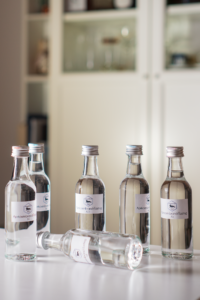
As you might know, I am a big fan of eau de vies. On top of that, I also love apricots. However, compared to apple, pear or plum eau de vies, apricot eau de vies are not that common. A reason for that might be, that it is not that easy to get high-quality apricots. Even if you do, it is even harder to turn them into an eau de vie which represents the whole flavour of the fruit. This is why some friends and I made a socially distanced blind tasting and compared the whopping number of fifteen apricot eau de vies.
The apricot (Prunus armeniaca) belongs to the rose family and among them it is the only genus in the tribe of the stone fruit plants (Amygdaleae). The Latin name comes from the assumption that apricots originate from what is now Armenia. Apricots were already known there in the Copper Stone Age. However, other sources assume that the fruits were first cultivated in China or India. Traditionally, apricots are grown in the Hungarian lowlands, but there are also well-known growing areas in the Wachau region of Lower Austria, in Kittsee in the Burgenland, in the South Tyrolean Vinschgau and in the Swiss canton of Valais. Especially suitable for apricot eau de vies are the varieties “Bergeron”, “Luziet”, “Orangenred” and “Hungarian Best”.
Distilling apricots
When making apricot eau de vies, care should be taken not to use any shadow fruits, as they are less aromatic. Since not all fruits ripen on the tree at the same time, apricots must be harvested several times by hand. There is a time window of maximum 36 hours after the harvest of the fully ripe but not overripe fruits within which the apricots must be mashed. Whether the apricots are stoned, sieved during fermentation or distilled with the pits determines the style of the distillate through the development of a bitter almond note. The fermentation usually takes place temperature-controlled under acid protection, at low temperatures around 16 °C. Apricots should be distilled during the declining fermentation to avoid unwanted flavours. Additionally, the remaining CO2 has a preservative effect on the mash.
A blind tasting
We tested fifteen eau de vies. However, I sneaked in a wrong sample, namely a peach eau de vie. All spirits came from Austria, Germany or Switzerland. I randomized the samples and send the tasting to seven fellow testers. As always with blind tastings, the results are a bit mixed. This means that a score above average already is a good result. In the tasting a 1 to 10 scale was used, but I converted it to my usual scoring system here on the blog. Below you will find the results as well as a short description of each apricot eau de vie.
Three from Austria
First up, where three samples from Austria. The Hämmerle Marille, with its iconic bottle uses apricots from the French Rhône valley and from Hungary. It takes around 9 kg of fruits for a litre of eau de vie. The fermentation uses selected pure yeasts and takes place in stainless steel tanks. The apricots are distilled during the declining fermentation. The second sample already was the peach eau de vie from renown distiller Georg Hiebl. The eau de vie uses vineyard peaches and it takes between 30 kg – 40 kg of fruits for each litre of spirit. The distillation takes place on a 150 l column still and eau de vie is aged up to 36 months. Next came the Brandstatt Marille distilled by Hansi Reisetbauer Junior the son of the famous Hans Reisetbauer. South Tyrolean apricots are mashed, around 16,5 kg per litre eau de vie, and distilled twice on a copper pot-still.
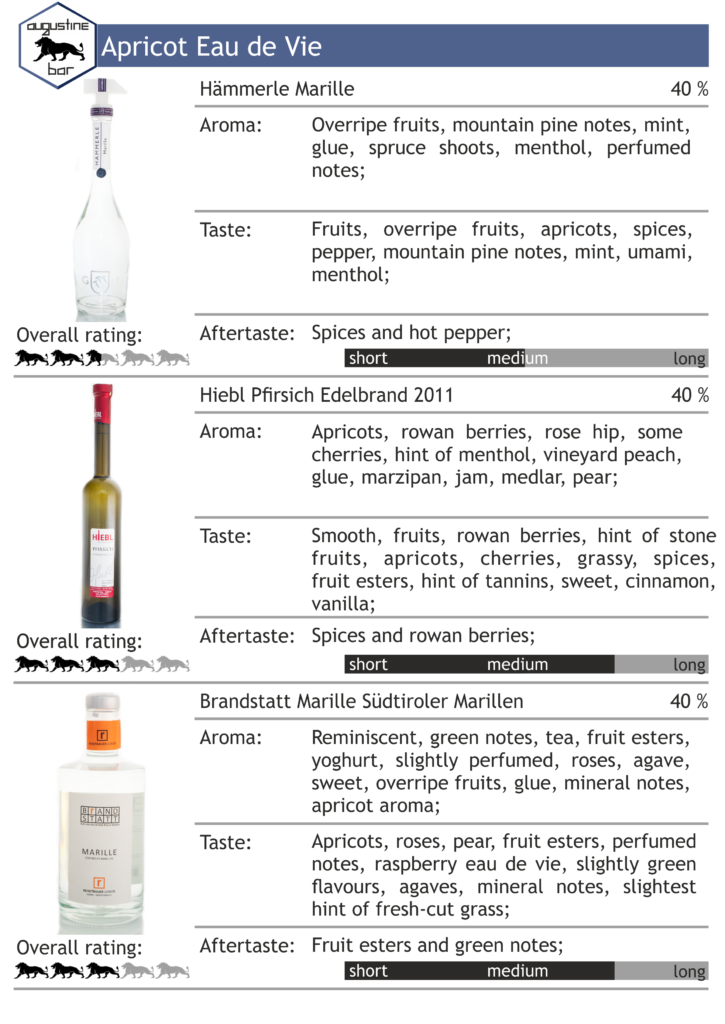
The Hämmerle (Avg. 5.4, Std. Dev. 1.7) has quite the unique mountain pine notes with some overripe fruits. However, this also means that the original apricot taste is a little subdued. The funny thing with the peach eau de vie was that it tasted different, but you could not really tell why. I thought that I smelled peach in the bouquet, but in the taste it changed to apricots. On top of that, the Hiebl Peach eau de vie (Avg. 5.4, Std. Dev. 1.9) had a distinct rowan berry spirit note which makes it quite complex. All in all, the peach eau de vie did quite well, especially considering its great value for money. To be honest the Brandstatt Marille (Avg. 5.6, Std. Dev. 2.0) was my personal value for money winner in the tasting. Yet, it polarized the testers as you can see by the high standard deviation of the results.
High reward
The Schosser apricot eau de vie is made from 12 kg – 15 kg of apricots from the Wachau per litre. The fruits are mashed directly at the vineyard where they grow in unused red wine tanks. The distilling also takes place at the vineyard, before the eau de vie is rested for two to four years. No sugar, flavours or alcohol is added to the Schosser Marillen Brand. The Prinz Marille uses apricots from Hungary, the Rhône valley and / or South Tyrol. All in all, 14 kg / litre are puréed and distilled under vacuum two to three times. Afterwards, the eau de vie is aged for 24 to 72 months in earthenware vats. On top of that, t1he dilution to drinking strength is done very slowly. Next, the apricot eau de vie from the renown producer Lantenhammer uses a mix of apricots from the Vinschgau, “Bergeron” apricots from Southern France and rose apricots from Hungary. All in all a whopping number of 24 kg fruits are needed for a litre of eau de vie. The special thing about the Lantenhammer Marillenbrand is that not all fruits are pitted, some are just squeezed. After the distillation to around 70 % ABV the eau de vie is aged in earthenware vats for three to five years.

The Schosser Marillen Brand (Avg. 6.4, Std. Dev. 1.1) has typical apricot and apricot jam notes. Those notes are supported by some glue and lactose notes. Not only I enjoyed this eau de vie quite much, but the other testers too, since it was has the highest rating and a relatively low standard deviation. The Prinz also scored high (Avg. 6.4, Std. Dev. 1.6) with rather pronounced apricot notes. However, the good first impression was somewhat tainted by the obvious sweetness. After measuring the ABV with an areometer, I am sure that there is some sugar in the eau de vie. The Lantenhammer (Avg. 6.1, Std. Dev. 1.5) only scored slightly lower with more floral and slight umami notes. However, it also left a rather complex tasting experience.
Rather luxurious
Next up, the flight started with the Schwarzer Vinschger Marille which translates to an apricot eau de vie made out of fruits from the South Tyrolean region of Vinschgau. The apricots are not all pitted before mashing and the eau de vie is rested for one year in earthenware vats. The Guglhof Marillenbrand is a vintage eau de vie from 2015. Only apricots from the Wachau region of Austria are used, namely the varieties “Ungarische Beste” and rose apricots. The temperature controlled fermentation takes place without stones and the mash is distilled twice. Guglhof does not add sugar to their eau de vies and the finished eau de vie rests for about three years. The third eau de vie in this flight also was the most expensive and comes from Reisetbauer. Contrary to his son, Hans Reisetbauer uses Austrian apricots from the famous winemaker Bernhard Ott. The three varieties “Klosterneuburger“, “Ungarische Beste” and “Bergerouge“ are distilled twice on a 300 l copper still to around 84 % ABV.
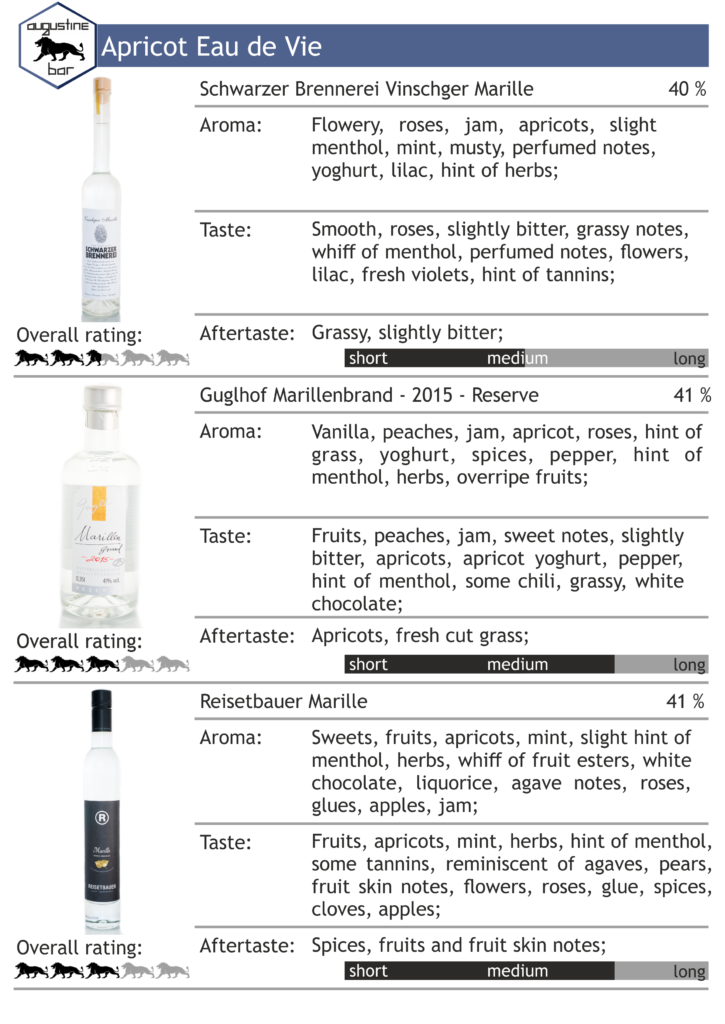
The Schwarzer Marille (Avg. 5.4, Std. Dev. 1.0) was very floral and perfumed. Yet, it lacked a bit of complexity and also had a musty note. I personally enjoyed the Guglhof Marille (Avg. 6.2, Std. Dev. 1.8) very much and highly recommend it which is also represented by its second place in the tasting. In the taste you can find tons of stone fruit notes, not only apricots and apricot jam, but also peach flavours. While the Reisetbauer Marille (Avg. 5.7, Std. Dev. 1.9) “only” came in the fifth place, I enjoyed it very much. With its apricot, fruit ester and white chocolate notes it left a lasting impression.
Apricots from Switzerland
The Gölles Marille uses 15 kg fruits per litre eau de vie of the varieties “Klosterneuburger“ and “Ungarische Beste“. The apricots are pitted and fermented temperature controlled around 17 °C – 19 °C. Afterwards mash is distilled twice to around 70 % ABV. The eau de vie is then aged for two years in demi-johns. Gölles does not add any sugar, flavourings or colourings to their eau de vies. The first apricot eau de vie from Switzerland in the tasting comes from Morand. It uses 12 kg of fruit for a litre of eau de vie of “Luizet“ apricots from the Wallis. The fruits are fermented for ten to 30 days and then distilled on a Holstein still with triple rectification to around 70 % ABV. The ageing takes place in stainless steel for six to eight months. Next up in the tasting came the Haussegen Marille from the Lechtal in Tyrol. They use home-grown apricots from Tyrol and distil them twice on copper stills.
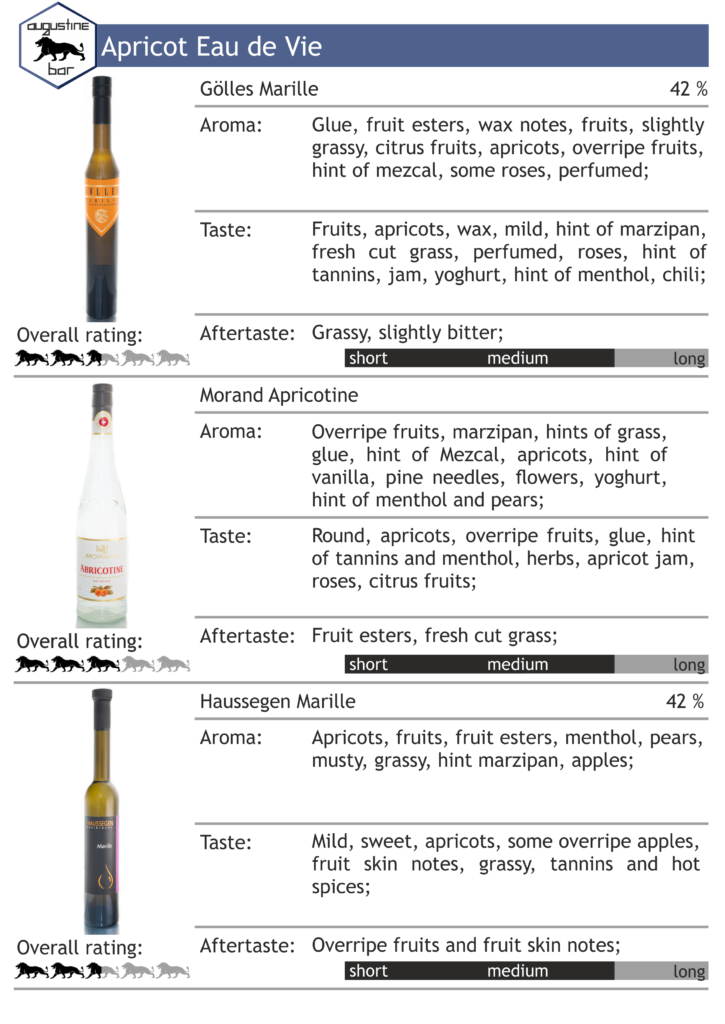
Unfortunately, I had the Gölles Marille (Avg. 4.8, Std. Dev. 1.5) open for quite a while, therefore it probably had lost some of its flavour. Nevertheless, you still could taste quite some apricot flavour. The Morand Apricotine has a rather robust taste with notes reminiscent of Mezcal and pine needles. Yet, there also was a clear apricot note present. Although there were apricot notes present in the Haussegen Marille (Avg. 5.1, Std. Dev. 1.0), it lacked some complexity.
Last but not least
Among the last three eau de vies in the tasting was the Etter Apricot from Switzerland. Apricots of the “Royal Luizet“ variety from the “Rive droite“ of the Wallis are used. It takes 12,85 kg of fruits for each litre of eau de vie. Distillation takes place on one of eight stills with a capacity of 360 kg. After distillation the spirit rests for 36 months in 50 l demi-johns. The Hiebl Marille 2016 uses between 20 kg to 25 kg of “Ungarische Beste“ apricots for each litre of eau de vie. The fermentation takes between one and three weeks and the mash is then distilled on a 150 l still. The last eau de vie in the tasting might also be the newest apricot eau de vie. It comes from Florian Faude and his distillery at the Kaiserstuhl. The varieties “Orangered” and “Bergeron“ from Feldberg in the Marktgräfler Land are fermented without stones at 16 °C. Afterwards the fermented fruits are distilled twice.
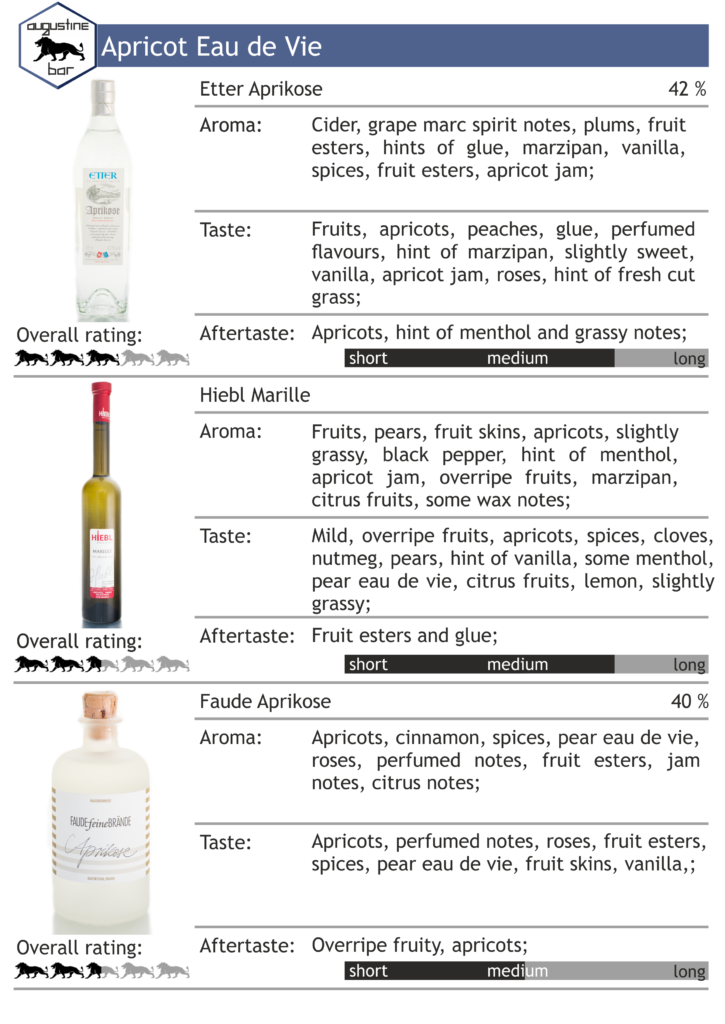
The Etter (Avg. 5.7, Std. Dev. 2.2) shares the fifth place in the tasting with the Reisetbauer Marille. Besides the apricot flavour you can also find other complex fruit notes in the taste. It reminded me of cider, plums and grappa. Next, the Hiebl Marille, one of my personal favourites, received mixed results (Avg. 5.3, Std. Dev. 2.2) with a high standard deviation. Besides a spicy apricot jam note, I only can attribute this to a certain bee’s wax note which might be unpleasant to some testers. Apart from that, I also tasted some citrus notes. The Faude Aprikose (Avg. 4.5, Std. Dev. 1.7) showed apricot and some pear notes, as well as some fruit esters.
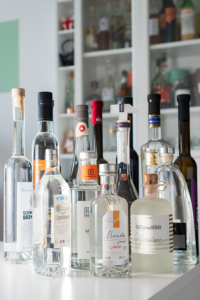
Even though it was a surprisingly difficult blind tasting, the results are very interesting. When I prepared the analysis, it turned out that there is an almost significant correlation between the kg of fruits used per litre and the resulting score. Yet, the price does note say much about how the eau de vie scored in this particular tasting, although I personally rated the more expensive bottles higher.

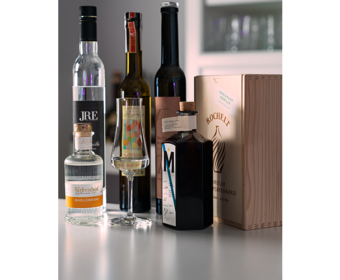
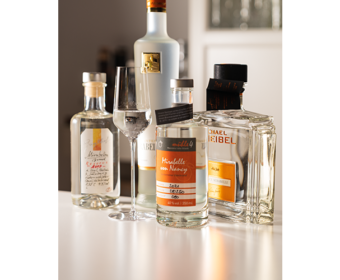
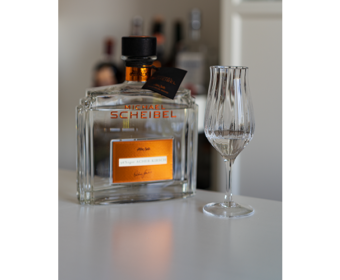
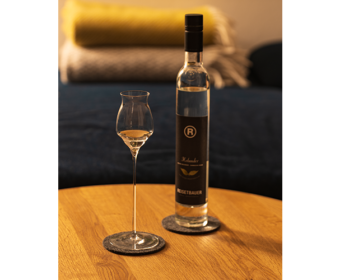
Where are you procuring the brandies? Difficult to find any of these in the states.
Here in Germany they are easily available. Maybe the Wine-Searcher site can help?